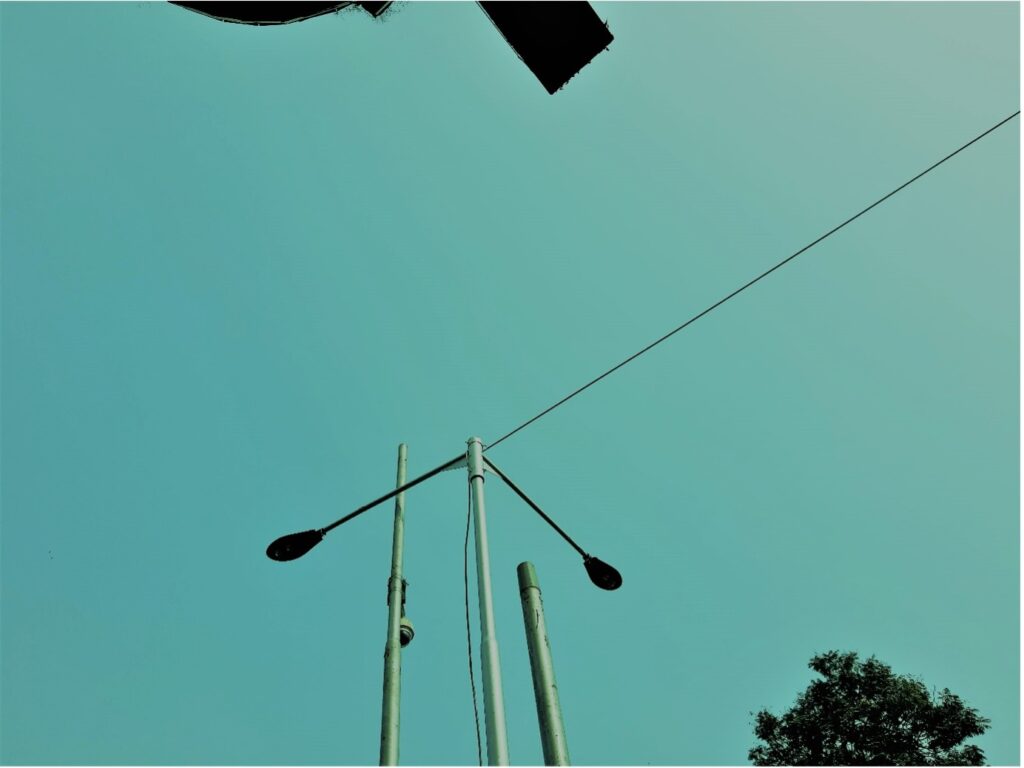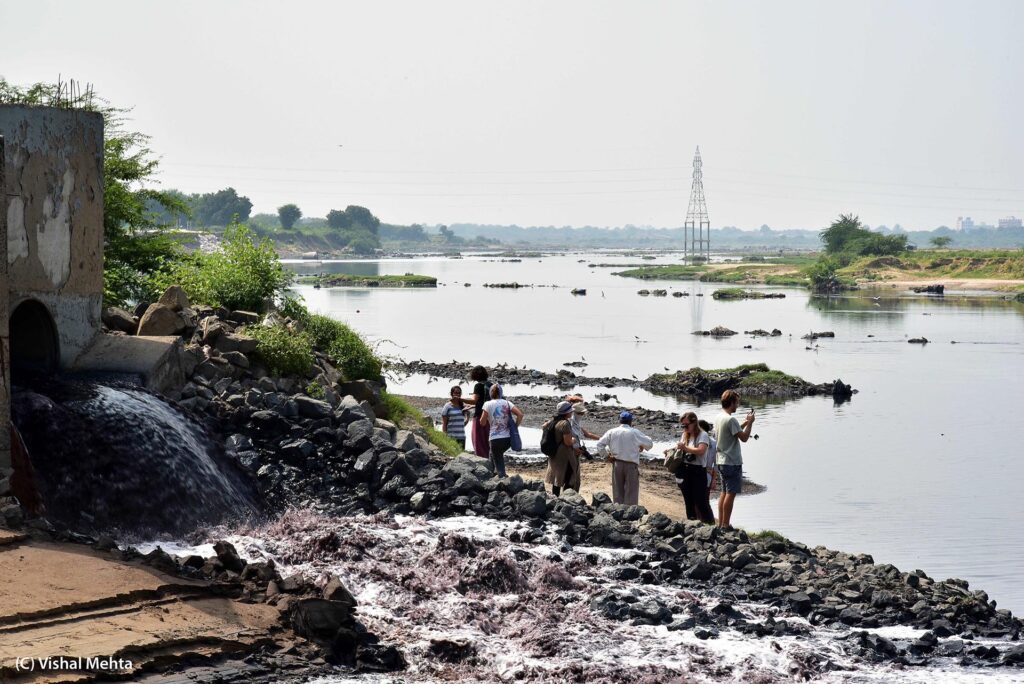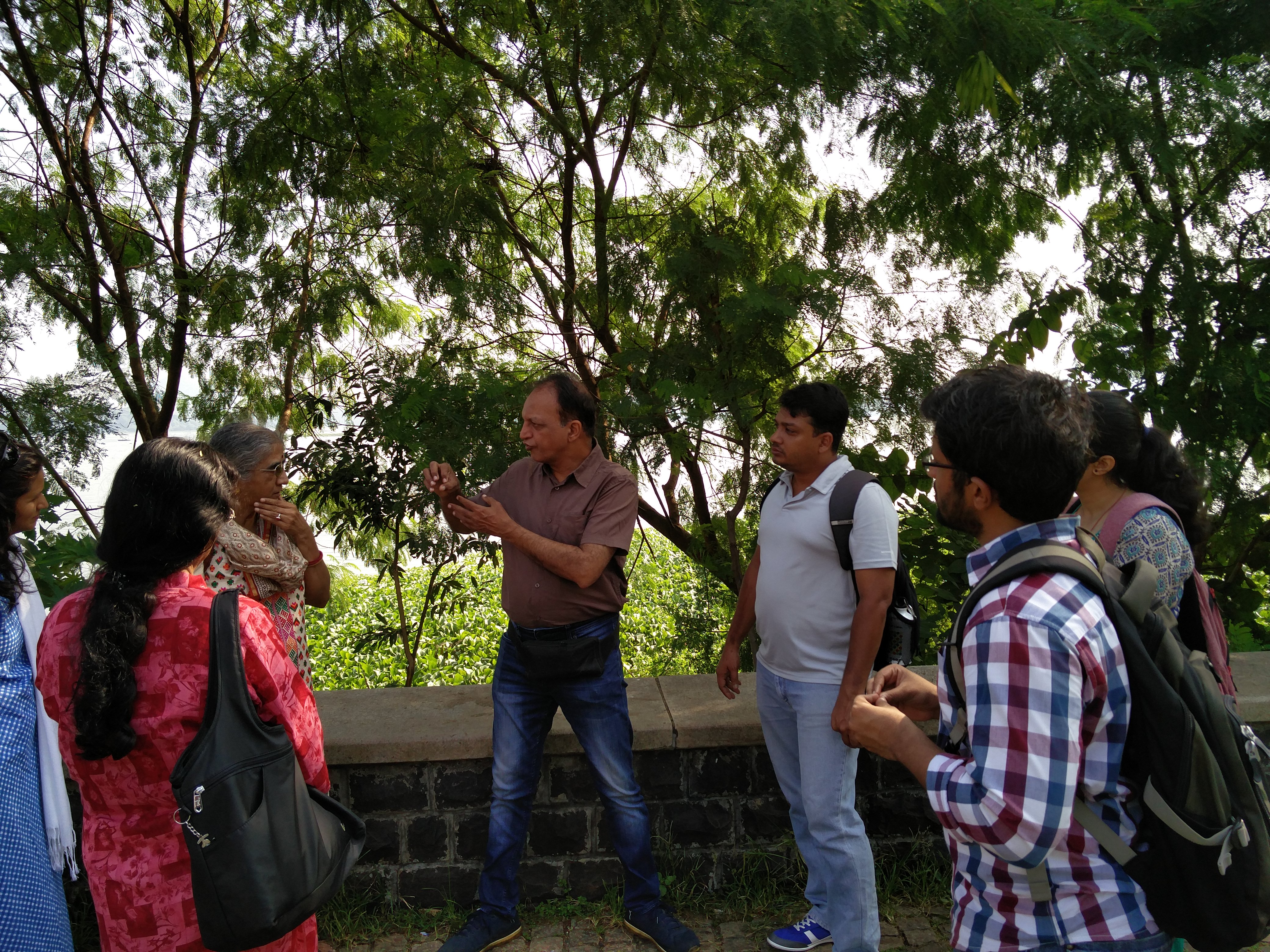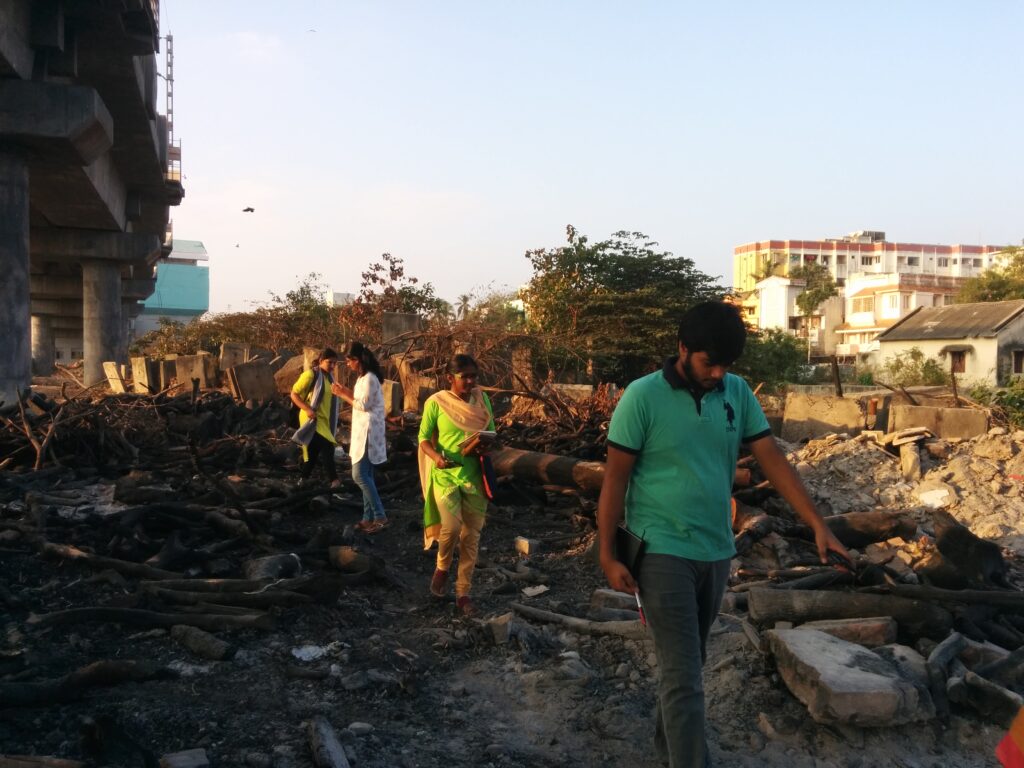By Dishannesha Mukherjee
I
The hunger of the river- talks of it were afloat in the air even before this generation was born. Their forefathers had seen the signs, but were unable, perhaps even unwilling to face the music. You see, it was but a landmass populated by insignificant outcasts, so, why would it not be insulated from the bad of the world as it was from the good? You see, they had made the land theirs through the toil of centuries, surely they can keep a hold on it. They had fought with a multitude of enemies- one of which was always inevitably the river and its roaring tides. However, paradoxically, the river was their lifeline- they felt in its waves an extension of the constant throbbing of the blood which flowed within their veins.
Their connection was undeniable which made these people the people of water. It was a divine river, vested with the powers to wash away human sins, so surely its holy powers would not fail in eradicating the looming evil. Its waters were brought into the earth from the heavens for this very purpose. Here, where the river divided herself into uncountable channels to rush towards the sea, the land was ever moody. Sometimes, it evaded sight, sometimes it showed itself. That is why when the men first decided to claim the land from the tides, they had to create embankments to mark their territory.
The river wasn’t too pleased with it and always communicated its displeasure by trying to wrest the land back into its belly. Hence, the constant tussle. In a vicious, yet ironic twist of fate, the actions of humans all over the world disgruntled the oceans. The displeasure channelled itself into this riverine estuary via the waves of the rivers. The holy droplets of water were polluted with human greed which turned it to poison. Its heart corrupted with the venom of rage, the waves danced to the tune of devastation. Even in the thinnest of its extensions, one could feel the rejuvenated strength. Anger, and a desire to conquer back the snatched land surged with its waves. Water. Water. Eating away at the fading landscape. Finally, everywhere. Where do you go when your home refuses to house you?
II
Tushi was ten years old. Her family were fortunate enough to live in an area which withstood the river’s plundering, for now at least. However, the slow land erosion did not safeguard them from the other dangers of the watery invasion. Destitution and diseases hung like miasma over the remaining land. It rained from the clouds and blew with the cyclonic winds. Tushi and her family still clung to their homestead, or whatever remained of it after the annual floods receded. The land was a ghost of its former self, unable to support the dreams- or the corporeal existence of the hordes that claimed kinship to it. You see, even in its heyday, the delicate and complex ecosystem of the land hadn’t been able to yield enough to sustain the population. With the bounty of the forest, the people had somehow made it through, but with almost the entirety of the forests gone, that was no longer an option. The remaining mangrove warriors were too battle-weary to provide protection against the regular onslaught of cyclonic storms.
Even then, Tushi and people like her had clung to the land, for as long as they could, as there wasn’t any other alternative. Cyclones and saline swells ravaged their dwelling, uprooted the homestead, and rooted hopelessness deep in their hearts. Tushi saw the river every day. It was an integral part of her life even in the days it benignly floated her father’s boat. The family depended on the murky tides for sustenance, so the river was almost like a family member, always at the hearth, ever present even in absence.
However, it was impossible to cling to the illusion of safety now. Their village had become uninhabitable. If they wished to live, they must move. Packing wasn’t all that difficult, a few rag tag clothes to cover their bodies, some utensils to fill their stomachs when they could manage to procure food, her parents and younger brother- Tushi was ready to go. They must leave before this year’s monsoon winds enter the delta.
The journey started.
III
Over the years, just like the hungry river that flowed through the land, the city of Kolkata had also slowly but surely encroached on the periphery. Such seamless integration made it rather difficult to demarcate its boundary. It was like the Cretan labyrinth, populated by hordes of ashen faces, each more troubled than the previous. To Tushi, it was like looking into a mirror. Everywhere she looked, she saw an image of utter destitution- like herself and her family. But, even in alike appearances, where was the kindred spirit?
Tushi and her brother Montu took care of each other during the day as their parents were roaming the city, searching for work. Initially, the siblings were intimidated by the strange environment. The only thing that stood out to them about their new home was the filth that laid all around. The “home” they were staying in was a ramshackle one room structure they shared with another family of four in one of the newest and dingiest slum-mushrooms that had cropped up on the body of the city.
In this potpourri of unfamiliar currents, Bashir Ali became the only island of familiarity to Tushi and Montu.
Bashir was the same age as Tushi and belonged to a family which, just like Tushi’s, was one of the last to leave their village behind. Even though they hailed from different villages in the same region, now they found themselves struggling side by side for survival in one of the many, many slums of a city which was populated by many millions. What are the odds! In life, poverty proved itself time and again as the greatest equaliser- making people of all creeds and castes and religions brethren in the struggle to live.
While Tushi’s family worked the river, Tariq, Bashir’s grandfather worked the forest. Mauley– honey gatherers is the name for their profession. With the government becoming stringent regarding who gets to rightfully enter the barely surviving mangrove forest, these professionals went almost extinct (just like the tigers!). They believed that the humans and tigers in the delta were brothers who shared the same fate for they were the children of the same mother- Bonbibi1. The animals and the humans of the delta shared the same fate, so it is only right they share the same mother.
In the sweltering heat of the summer noon, Tushi, Montu and Bashir gathered around Tariq Ali to listen to the stories of bygone days. This was how it has always been. Tariq had learnt all he knew sitting at the knee of his elders and now in turn shared with the future generation his patrimonial wisdom. Oh how magical those stories were! Tariq spoke of his lost home, his childhood, the forest, the rivers, the people and the bygone days.
He told them stories of how they lived back in the days when the river wasn’t so vengeful. He spoke of journeys into the forest, of encounters with tigers and crocodiles, of how their ancestors came and wrestled with nature to win this home-land that was now gone. He spoke of Bonbibi and Dakshin Ray2, celebrations and festivals, and the brotherhood of men that are no more. As he recounted the stories his voice was embittered by the recounting of losses. Tariq spoke with nostalgia but the children heard only love.
The trio sometimes listened mesmerised and sometimes assailed their Dadu3 with a plethora of questions. Tushi and Montu kept whispering these stories to each other as they laid in the darkness waiting for sleep to come, beside their exhausted parents. Bashir, Tushi and Montu would often in the afternoons meet by the black-watered canal that flowed behind their houses. Here was a place that was completely their own. It is here they would imagine many answers to the supplicatory “Tarpor?4” of every story Tariq told them. It is here, miles away from their delta home, where three displaced children formed a connection to their original home.
IV
Anil, Tushi’s father had been gloomy for some days. Whenever Tushi and Montu asked him about it, he avoided answering them. This bothered the siblings greatly as their father was one of those people who always looked at the silver lining. Although Anil kept mum, the children heard something from the discussions of the adults around their home.
The gist of the matter was already familiar to them. The city of Kolkata was also besieged by the river just like their old deltaic home. It was bursting at its seams due to the explosive rise in the number of migrants. It simply wasn’t sustainable. The systems of the city barely functioned due to the influx of people. Coupled with that was the constant expansion of the river into the city. Hunger and poverty old companions, but along came disease. It became increasingly evident to everyone that not all of them could continue staying here. In fact, those who had the means had been on the move, but for those who didn’t, a decision remained to be taken.
Leaving is easy for two types of people- one, who have everything, and the other who have nothing. For people like Tushi and Bashir, the ones who had something, rather an illusion of something, it was a dilemma because hope and care is what kept them rooted in their current place.
“We will lose all that we have right now”, said Anil. “What exactly do we have that you’re so worried about losing?”, asked his wife Sandhya. Anil did not reply, and kept looking out of the door. “At least we will have the chance to have something”, his wife added in a softer tone.
This is a scene that has been recurring in Tushi and Montu’s home for almost a month now. It has been a year since Anil and Sandhya came to the big city with their children. None of them had been able to find steady work or a means of bettering their lives. They had been able to barely survive due to the solicitude of neighbours. The condition of the city itself was also rapidly worsening.
It was at this moment the announcement was made. There was a land far, far away here where there was space for them- these displaced hordes. There, the people would have a place to live, and food to eat, and work to do. Actual homes, not dingy slums. Actual food, not just scraps. All you had to do was register your name with the government and wait. Once your turn comes, you’ll be transported there with your family and the other registered people. Some people jumped at the first chance while some people, like Anil, were hesitant. Once burnt, twice shy.
Bashir, Tushi and Montu would meet at their secret place and imitate the discussions of the elders. “We will have a place to live”, Montu would say, “But, we won’t be together”, Bashir would counter. “It is a foreign land far, far away”, Tushi would add. The three would be silenced by the solemnity of those words and the ominousness of the unknown.
V
The entire colony was suspended in this dilemma when Tariq Ali called his neighbours for a discussion late one evening.
Tariq was respected in the community not only because of his age, but also because he was a relic of better bygone days. Some people answered his invitation, his next-door neighbour Anil and his family were one of them.
In a soft, low voice Tariq began his address. “I, just like you, heard about this relocation business some time ago. I was deeply anxious to hear it… I felt the same helplessness that I did when I left home with Bashir. But, during this time, many of those that lived with us have moved and that got me thinking. I am poor and illiterate, I fear the big world out there. I wanted to spend my days in the mangrove forest but that wasn’t possible, Mother Nature herself refused me- us that privilege,”Tariq’s voice moistened as he spoke these words.
He carried on. “When I-we simply couldn’t stay, so we moved here. I often thought to myself why this place? When I could have gone to any other big city with my family. I got an answer to my question as I told the stories of the life I-we lived to these children” he pointed out Tushi, Bashir and Montu among the group of listeners. “It was because I didn’t want to be far away from what I called home even when I was already exiled from it. I wanted to look at the river and pretend it’s the same. I wanted to pretend this is the same…” Tariq gestured to his ill-lit, dingy room and broke down crying.
After a few moments, he recollected himself. “As I was telling my stories I also slowly realised something- just because I moved away from the land I called home doesn’t mean I’ll have to abandon my home. I will keep it alive here” he gestured to his heart. “I moved to give Bashir a better life and I cannot do it here. So, I must move. Just like my great grandfathers had to in order to give me the life I am pining for right now. So, I’ll take my family and go to this new land. No matter how far it is, it is still under the same sky. There, we will forge a home. We will build it with the best of the home we lost.” There was a firm ring of conviction in his voice. “I will not lose my home, instead, I will just transport it elsewhere, where it will be safe.” He had composed himself by now, “But, my forefathers couldn’t have done it alone, they managed to defeat the river and the tigers because they were together. I called you here to ask for help- let not me, or any of us, go friendless to face the dangers of the unknown and the uncertain.”
That night, Anil came back home late. As soon as he did, he sat down beside Sandhya and said, “You were right… we came here to live, and this is no way of living. It will be difficult, but let’s go together. My grandparents created the homestead I pine for, and we will together create a new home for us to thrive in. At least let’s take the chance, whatever be the outcome.”
Sandhya clasped Tushi and Montu to her chest, and turning towards Anil she said, “The first step is the most scary. Alone, we might not have made it, but together, I believe we will. We will somehow manage- just like we are doing now. Our people fought the hungry river and the bloodthirsty tigers, we can do it.”
They rested that night in anticipation of tomorrow. It was an anticipation pregnant with hope, unlike their usual worries. There were a lot of preparations to be made for it was no longer only a measly number of four people who would be travelling.
Thus, the journey started.
- A forest deity exclusive to the Sundarban region. She is worshipped by the Hindus and the Muslims alike.
- Another forest deity of the Sundarbans. He is believed to be the adversary of Bonbibi though both are venerated together and share power over the region
- Bengali, Grandfather
- Bengali, “After that?” is usually a question asked by listeners to urge the storyteller to continue the story.



